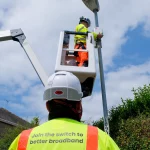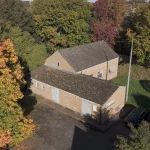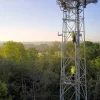London Underground Set for Full 4G Mobile Coverage by 2024

The Mayor of London, Sadiq Khan, and Transport for London (TfL) have today confirmed that, following a recent trial on the Jubilee Line (here), they intend to proceed with their proposed plan to deploy a 4G based mobile (mobile broadband) network across the entire London Underground (platforms and tube trains) by late 2024.
The original non-commercial trial on the Jubilee Line (eastern half of the line) saw TfL install a neutral host distributed antenna system (DAS), which was supported by hundreds of kilometres of fibre optic cable that had been laid in tunnels – as well as similar surface assets to support ‘last mile’ connectivity.
All four UK mobile phone network operators – EE (BT), Vodafone, O2 (VMO2) and Three UK – took part in the trial and were offering a service to their customers. The network enabled passengers to make phone calls, check for the latest travel information, catch up on social media, watch a video and read their emails or the latest news “uninterrupted” during their journeys. Ticket halls and corridors within stations are also covered by the pilot.
Advertisement
The pilot project itself was scheduled to last for 24 months until March 2022, but clearly it went well because TfL now intends to proceed to a full deployment. In keeping with that, TfL has just awarded a 20-year concession agreement to BAI Communications (BAI), which is a global provider of mobile infrastructure. Mobile operators will then be charged for access (wholesale).
Sadiq Khan, Mayor of London, said:
“I’m delighted to announced today that I am fulfilling that commitment and full internet access will be available across the Tube, with key central London stations such as Oxford Circus and Euston set to benefit before the end of next year.
Protecting jobs and stimulating our city’s economy is a top priority for me as London rebuilds after this pandemic, and investing in London’s connectivity and digital infrastructure is central to this.”
The first places to benefit from this will include some of the busiest stations, such as Oxford Circus, Tottenham Court Road, Euston, Camden Town and Bank, which could be ready by the end of 2022. Naturally, it takes a long time to deploy this sort of network because it has to be done safely, to fit around an otherwise very busy underground transport network, where access is limited.
The announcement may also help to explain why Vodafone quietly stopped being available via the underground’s WiFi network last week (here). At present, around 260 London Underground stations are covered with WiFi as a result of Virgin Media’s deployment some years ago, which was made available to customers of mobile operators via way of a wholesale agreement. Meanwhile, anybody else has to pay for a special pass.
In theory, any operator able to offer mobile broadband to London Underground stations and tube trains would have less need for WiFi connectivity. On the other hand, it will take a few years for TfL to complete the build and thus Vodafone appears to have made their move early and without giving their customers any prior warning.
Advertisement
However, our own sources have indicated that BAI may be making it quite expensive for mobile operators to get involved with the new network (hardly surprising, given the cost of deployment in such an environment). As such, it remains to be seen how many operators actually sign-up to the final network, thus it may be premature for Mayor Khan to claim his job is done. It’s not even built yet.
Mark is a professional technology writer, IT consultant and computer engineer from Dorset (England), he also founded ISPreview in 1999 and enjoys analysing the latest telecoms and broadband developments. Find me on X (Twitter), Mastodon, Facebook, BlueSky, Threads.net and Linkedin.
« Alncom and RunFibre Extend Full Fibre to South Gloucestershire





















































That’s not bad news, but by 2024 most people will be on 5G phones … they should future-proof it a bit and go 5G.
I suspect a lot of the kit they end up deploying may well support 5G, but it’s a fair question. I did wonder myself why 5G didn’t figure more in the news, which might stem from the fact that the details were being decided before 5G was even being deployed, or perhaps it’s an issue of spectrum bands (some will work better in the underground than others).
Probably because no carrier has the bandwidth availability to deliver 5g to the London underground.
Completely different business model on this one relative to normal mast backhaul.
So, as I understand it now, the infrastructure being deployed is said to support future upgrades to 5G. But the early priority is 4G, partly because that’s what the new Emergency Services Network (ESN) requires.
5G does feature on parts of the Jubilee line trial. Certainly it has worked for me that way inthe London Bridge & Canary Wharf areas. Not sure if that’s a permanent part of the trial, or was a time limited part.
Problem is most of the currant tech is in non standalone mode so it needs 4g to function and 5g voice only works over VoLTE 4g and most people don’t have a 5g phone or have one that won’t work correctly with 5g in the future for these underground networks for voice calls (like 4g again with 5g new network been deployed again when they haven’t got the VoLTE working on 5g)
4g tech is what can be deployed now and can be used by 99.9% of people right away (you find someone who still has a 3g only phone)
This is where I show my total lack of knowledge and ignorance, does 4G carry better in tunnels?
AFAIK not necessarily, beyond the new tech like Massive MIMO which is good, it’s just a question of radio bands and for 5G we now have a 700 MHz band that goes far and wide, in addition to the 3500MHz band. Penetration should be good, plus operators will most likely reuse LTE bands for 5G with time.
Happy to stand corrected.
I did wonder if the ‘improved latency’ of 5G could be a problem in crowded underground sardine cans, driving along and switching regularly between different antennas.
2G-5G makes no difference, 5G can be runa in any of the 700 to 3500MHz bands, there are no restrictions. So this is down to several factors:
– low as possible frequency for distance and penetration through structures
– the optimum power outputs consistent with ensuring little or no intercell interference, not exceeding ICNIRP limits and yet as much power as possible to deliver as much bandwidth as possible
– enough frequencies and wide channels to serve many users and allow for interference mitigation at cell edge
– all of the above at the lowest possible cost as doing this in tunnels is currenmtly expensive
This will be an RF over fibre deployment with DAS; Base station hotels. The technology is not the issue – it will be the commercials.
Crossrail has a system going on, so that should be part of this too.